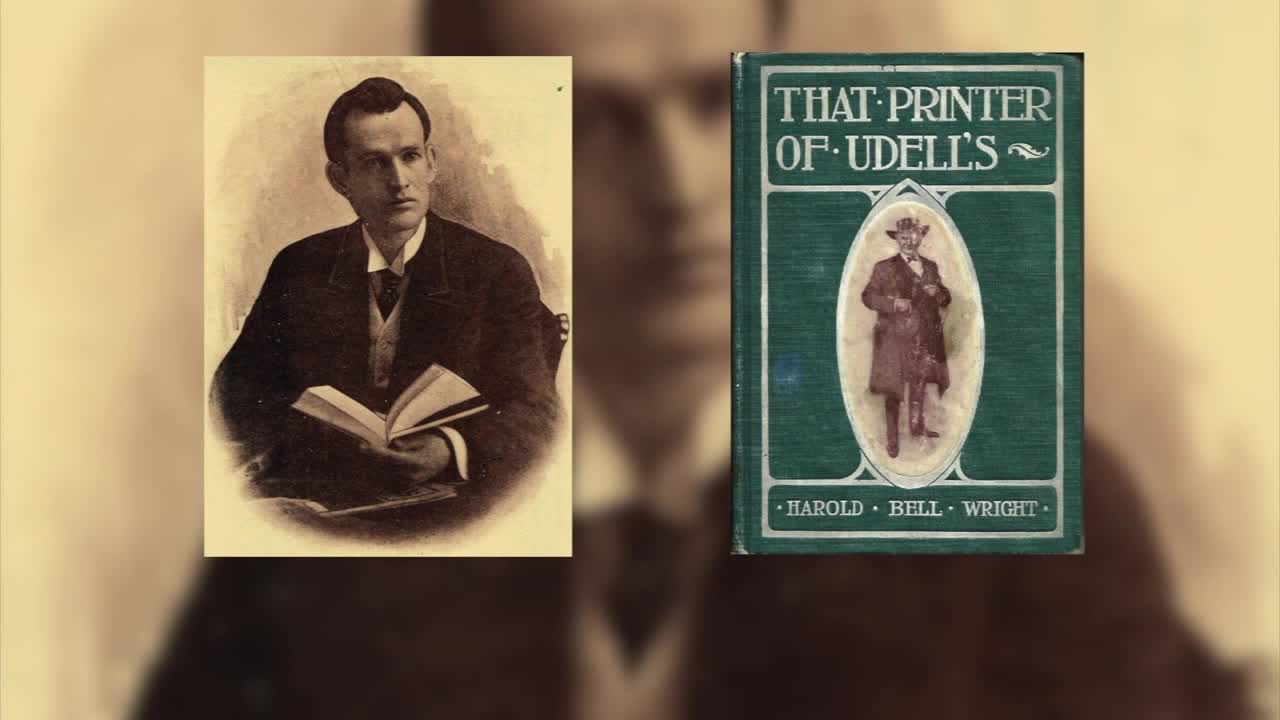TUCSON, Ariz. (KGUN) — In an earlier Absolutely Arizona feature on the Iron Door Mine, I shared the legendary story of lost treasure somewhere in the Santa Catalina Mountains. That story was made famous by Harold Bell Wright, a best-selling author in the early 1900s.
Wright's story, as it turns out, is also worthy of being called Absolutely Arizona.
"His books out-sold the books of Mark Twain one year," said award-winning Tucson historian David Leighton. "So, that tells you how big he was at one point."
Leighton is describing the impact best-selling author Harold Bell Wright had on American literature in the first half of the 1900s. His impact included several books centered around Tucson where he lived for many years.

Now a century later, you may have never heard of Harold Bell Wright. That is, unless you're street-smart like Leighton, and recognize a neighborhood on the east side named for Wright.
"By naming the estate after him, the subdivision, naming the streets after characters in the books, it was a great idea," Leighton said.
Wright's legacy lives on in the Harold Bell Wright Estates, located on the southeast corner of Speedway and Wilmot.

But to understand his journey to Tucson, you have to go back to the start. A preacher living in Kansas, Harold Bell Wright wrote his first melodramatic story entitled That Printer of Udell's. It was published in 1903.
"That actually did inspire President Ronald Reagan to become a Christian," recalled Leighton.
And it inspired Printer Udell Street in the Harold Bell Wright Estates. You'll also find Shepherd Hills Drive named after Wright's second novel The Shepherd of the Hills. Corinth Avenue comes from a fictitious town in Wright's third book The Calling of Dan Matthews. And his 1911 novel, The Winning of Barbara Worth, inspired Barbara Worth Drive.

In 1915, Wright was diagnosed with Tuberculosis.
"Health reasons brought so many people to Tucson and that's what brought him here," explained Leighton. "That's where he kind of set up his life as he healed and got better."
Wright credited St. Mary's Hospital and the Tucson weather with his improved health.
His 1919 novel, The Re-Creation of Brian Kent, is remembered in the Harold Bell Wright Estates as Brian Kent Street.
By 1922, Wright had purchased land far east of Tucson near what is now Speedway and Wilmot. There, he built a pueblo-style home.
That's about the time he learned of a legend centered around the Santa Catalina Mountains.
"The Iron Door Mine, gold in the mountains, Buffalo Bill Cody," said author and publisher Robert Zucker.
Zucker has written about and searched for the Iron Door Mine.
"Before 1880, it was a well-known story in this area," Zucker said.
It was a story of a lost gold and silver mine somewhere in the Santa Catalina Mountains. The untold riches are protected by an iron door.
WATCH | Legend of the Iron Door Mine
The story made its way to the pages of Harold Bell Wright's 1923 novel The Mine With The Iron Door.
"Which later was made into a film, which is how it became more popular," said Leighton. "Many of his books were actually turned into films, and that's what actually helped his legend grow."
The Mine With the Iron Door was filmed in and around Tucson, just like the movie version of his 1924 book A Son of His Father.
Wright also owned a ranch southwest of Tucson near what is now the Tohono O'odham Nation. Perhaps his most significant work was gathering oral stories from tribal elders.
Fearful the stories would be lost, Wright published Long Ago Told: Legends of the Papago Indians in 1929.
"It's one of the rarest books but it's probably one of the most valuable books because it was one of the first to actually write down, in writing, these legends," Leighton said.
By 1934, Tucson's rapid growth had reached Wright's estate. He moved to California and lived until his death in 1944.

In 1950, Mary Gardner, who owned Wright's home and property, developed the Harold Bell Wright Estates with streets named for characters and places in his books.

"If she hadn't done this, we wouldn't have the Harold Bell Wright Estates subdivision, we wouldn't have these street names," said Leighton. "He'd be largely forgotten."
Instead, in Tucson, Harold Bell Wright remains Absolutely Arizona.
——-
Pat Parris is an anchor and reporter for KGUN 9. He is a graduate of Sabino High School where he was the 1982 high school state track champion in the 800 meters. While in high school and college, he worked part-time in the KGUN 9 newsroom. Share your story ideas and important issues with Pat by emailing pat.parris@kgun9.com or by connecting on Facebook, Twitter, and Instagram.




